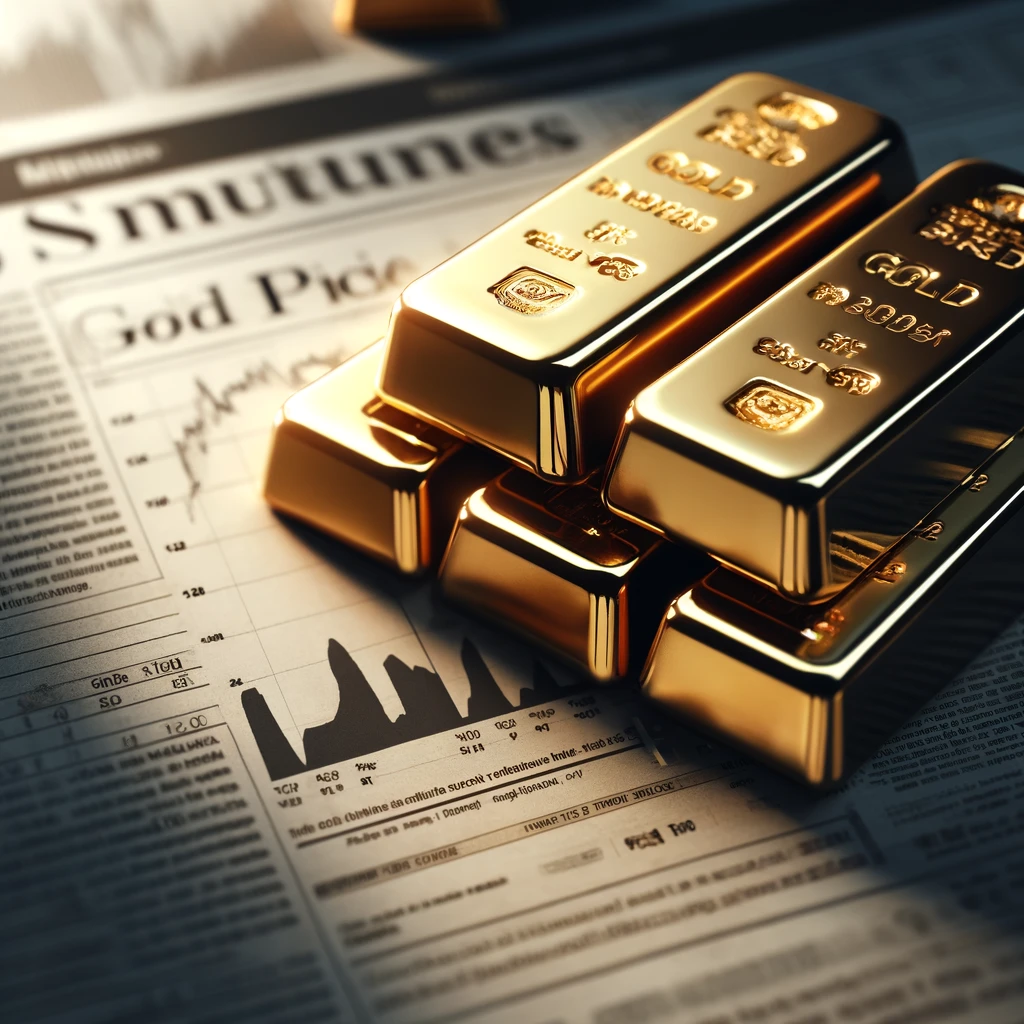
In the volatile arena of global finance, few assets offer the stability and resilience of gold. Recent surges in gold futures, climbing by 0.6% to $2,356 a troy ounce, have captured the attention of investors and analysts alike. This upward trajectory, fueled by safe-haven demand, reflects the prevailing geopolitical tensions and economic uncertainties that grip the international stage. As geopolitical fault lines deepen and economic anxieties simmer, gold emerges as a steadfast refuge for investors seeking shelter from the storm.
The Underlying Dynamics: Unpacking the Surge in Gold Prices
The surge in gold prices finds its roots in a complex interplay of geopolitical factors and market dynamics. Geopolitical tensions in the Middle East, particularly amidst looming concerns of a Rafah invasion by Israeli forces, have sent shockwaves through financial markets, prompting investors to flock to safe-haven assets. Analysts from BMI, a unit of Fitch Solutions, highlight the pivotal role of geopolitical uncertainties in bolstering gold prices, creating a robust foundation underpinning its ascent.
Furthermore, the historical significance of gold as a store of value during times of uncertainty and crisis cannot be overstated. Throughout history, gold has maintained its allure as a safe-haven asset, shielding investors from the ravages of inflation, currency devaluation, and geopolitical upheavals. This enduring appeal, rooted in its intrinsic value and scarcity, continues to underpin the surge in gold prices amidst the current geopolitical turbulence.
Market Resilience and Limiting Factors: Navigating Headwinds
Despite the resilience of gold as a safe-haven asset, analysts caution against complacency in the face of potential limiting factors. Renewed strength in the dollar, coupled with shifting market expectations regarding Federal Reserve interest-rate cuts, poses challenges to gold’s upward trajectory. As a non-interest-bearing asset, gold faces headwinds in environments characterized by rising interest rates, tempering the exuberance of bullish investors. BMI analysts underscore the importance of these factors in shaping the outlook for gold prices, urging a nuanced understanding of market dynamics.

Forecasting Gold Price Movements: Balancing Optimism with Prudence
As investors grapple with the complexities of gold price movements, the role of geopolitical tensions in the Middle East emerges as a critical determinant. BMI analysts offer nuanced insights into potential scenarios, suggesting that while gold prices may encounter resistance at the $2,400 level if tensions persist at the status quo, further escalations could propel prices even higher. The delicate balance between geopolitical uncertainties and market dynamics underscores the need for caution and prudence in navigating the intricacies of gold investment.
Furthermore, the emergence of new geopolitical flashpoints and the evolving geopolitical landscape introduce additional layers of uncertainty into the equation. From tensions in the South China Sea to diplomatic standoffs in Eastern Europe, geopolitical events around the world have the potential to impact investor sentiment and drive shifts in gold prices. As such, investors must remain vigilant and responsive to geopolitical developments, adjusting their investment strategies accordingly to capitalize on emerging opportunities and mitigate risks.
Silver’s Parallel Trajectory: Reflections of Market Sentiment
In tandem with gold, LBMA silver has experienced a notable uptick, rising by 0.9% to $27.37 an ounce. Silver’s performance serves as a barometer of broader market sentiment, offering valuable insights into prevailing economic anxieties and investor preferences. As investors seek alternative avenues for diversification amidst volatile market conditions, silver emerges as a compelling option, mirroring the resilience of its golden counterpart amidst uncertainty and turbulence.
Moreover, the industrial applications of silver further contribute to its appeal as an investment asset, providing a hedge against both economic downturns and geopolitical uncertainties. As global demand for silver continues to grow, driven by the expansion of renewable energy technologies and the rise of digital industries, silver’s role as a store of value and a strategic asset becomes increasingly pronounced. In this context, silver’s parallel trajectory with gold offers investors a diversified approach to navigating the uncertainties of the global economy.
Conclusion: Charting a Course Amidst Uncertainty
In conclusion, the recent surge in gold futures underscores the enduring allure of precious metals as safe-haven assets amidst geopolitical uncertainty and economic turbulence. While geopolitical tensions in the Middle East provide tailwinds for gold prices, potential limiting factors loom large on the horizon, necessitating a balanced and nuanced approach to investment. As investors navigate the complexities of the global economy, gold’s resilience shines through as a beacon of stability in an increasingly uncertain world.










